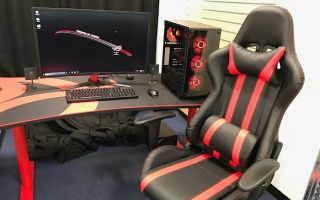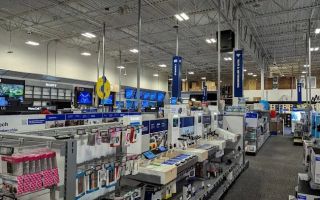- 1. Understanding the Boot Menu
- 2. Why You Need to Access the Boot Menu
- 3. How to Enter the Boot Menu on Different PCs
- 4. Common Issues When Entering Boot Menu
- 5. Tips for Using the Boot Menu Effectively
1. Understanding the Boot Menu
The boot menu is a vital tool in your PC's startup process. It allows you to select which device or drive (like a USB, CD/DVD, or hard drive) to boot from when you start your computer. Accessing the boot menu is particularly useful when you want to install a new operating system, recover your system, or troubleshoot hardware issues.
By using the boot menu, you can bypass the default startup sequence and choose a specific device to load the operating system. This is a critical function for anyone needing to install software or perform maintenance tasks on their computer.
2. Why You Need to Access the Boot Menu
There are several scenarios where accessing the boot menu is essential. Here are a few common reasons why you might need to access the boot menu:
- Installing a new operating system: If you're setting up a new OS, you’ll often need to boot from a USB drive or DVD to begin the installation process.
- Running system recovery: When your computer encounters problems and needs repair, you might need to boot from a recovery disk to troubleshoot or restore your system.
- Booting from an external drive: Whether you're running Linux from a USB or testing software on a separate drive, the boot menu allows you to easily select external media as your startup option.
- Updating the BIOS/UEFI: For certain updates or hardware changes, you may need to boot from a special setup tool or disk.
3. How to Enter the Boot Menu on Different PCs
Accessing the boot menu is slightly different depending on the manufacturer and model of your computer. Here are the general steps for entering the boot menu on various PCs:
- HP: Restart your HP PC and press the ESC key repeatedly while the computer is booting up. This will bring up the boot options menu, where you can select the boot device.
- Dell: Restart your Dell computer and press the F12 key as soon as the Dell logo appears. This will open the boot menu.
- Acer: For Acer laptops, press the F12 key as your PC starts to boot to access the boot menu.
- Lenovo: On Lenovo PCs, you typically press the F12 key during startup to enter the boot menu.
- Asus: Press the ESC or F8 key immediately after powering on your Asus computer to access the boot menu.
Make sure to press the appropriate key during the initial startup phase, as this is crucial to access the menu before the operating system begins to load.
4. Common Issues When Entering Boot Menu
While accessing the boot menu is a relatively straightforward process, users may encounter some challenges. Here are a few common issues:
- Not pressing the key in time: If you miss the timing to press the boot menu key, the system will continue with the default boot process. In such cases, simply restart your PC and try again.
- Incorrect key: Some PCs require different keys to access the boot menu. If the listed keys (like F12 or ESC) don't work, consult your computer’s manual or manufacturer’s website for the correct key.
- Boot options not showing: If the boot menu doesn’t show up, ensure your BIOS/UEFI settings are correctly configured to allow booting from external media.
Most of these issues can be resolved by double-checking the settings or ensuring the correct key is pressed at the right time.
5. Tips for Using the Boot Menu Effectively
Here are some helpful tips to make the most out of your boot menu:
- Know your boot devices: Ensure you have the correct boot media (USB, CD/DVD, or external drive) prepared before accessing the boot menu.
- Change boot order in BIOS/UEFI: If you frequently boot from an external device, you can change the boot order in your BIOS/UEFI settings to make the process quicker.
- Keep backup recovery options handy: Always have a recovery disk or bootable USB on hand in case your operating system faces issues.
- Disable Fast Boot: Some systems with fast boot enabled may bypass the boot menu. You can disable this feature from your system settings if needed.
By following these tips, you can ensure a smooth and efficient process when using the boot menu on your computer.
If you're interested in learning more or need assistance with your computer's boot menu, check out Ninja Stik for expert guidance and additional tools.




























